Movie Review: A Samurai in Time
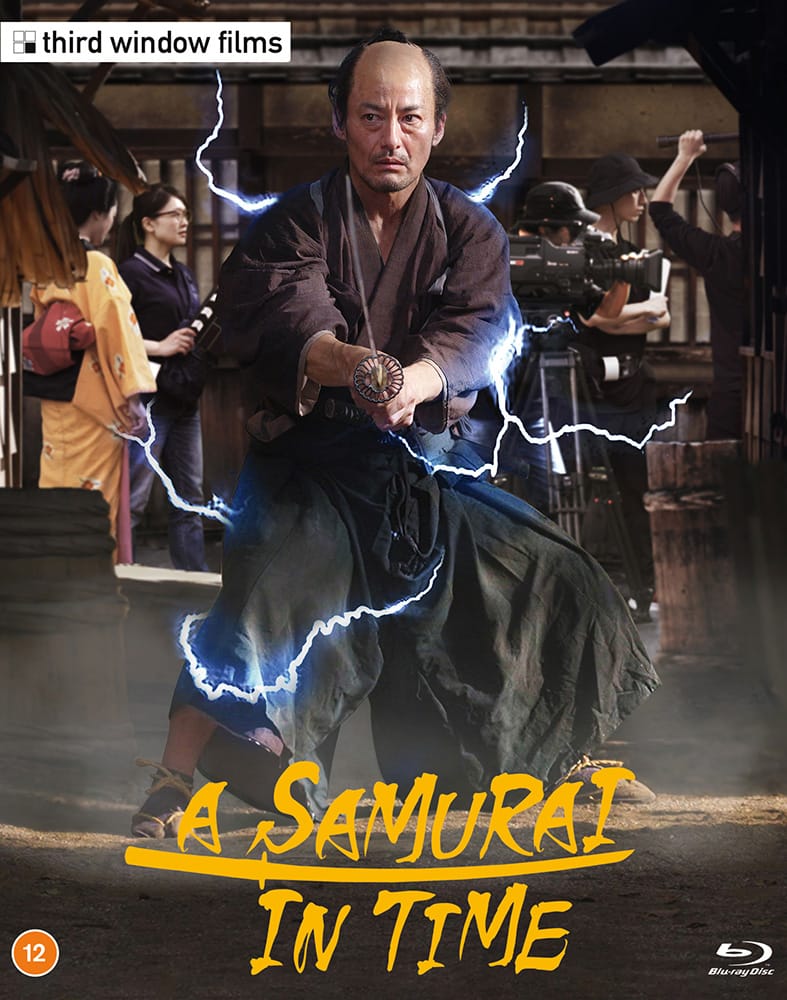
In early October 2024, I was visiting Japan on a week-long solo trip. While I was there, a Japanese friend of mine whom I hadn't communicated with in a while saw that I had been making social media posts indicating I was in Tokyo and invited me to come meet up with him. He was kind enough to sit me down for a meal with several other friends of his who largely work in and around all kinds of different Japanese entertainment industries--manga, gaming, and television. At one point during our dinnertime together, one of his friends started telling me about a movie he had recently seen called Samurai Time Slipper. I did a quick search on my phone right then and there so I wouldn't forget, and saw that it was getting played at film festivals under the localized title of A Samurai in Time (after all, "slipper" isn't really a word we commonly use in English to describe a time traveler, the way the Japanese have taken to using the word). The man was gushing about the movie for several minutes and told me that I probably couldn't watch it yet, but that I should be able to soon, since it was still doing its run at film festivals. But he was so passionate in his praise for the movie, I knew I wanted to remember it and watch it later.
Thankfully, I finally got my chance, as this past month UK distributor Third Window Films released the movie on Blu-ray. Seems they've also released it on Vimeo and Amazon Prime Video in the UK, but as an American it looks like my best bet was just buying the Blu-ray anyway, which I'm grateful is region-free. I got worried when it released and I finally saw one other person on my English social media feeds saying that the movie was just okay. I wondered if I had just locked into buying a movie that was just okay, but I still couldn't shake the great experience I had meeting new friends in Japan who couldn't wait to tell me about this movie. And I've finally had the time and the opportunity to sit with my Blu-ray and watch not only the film, but all the extras on the disc.
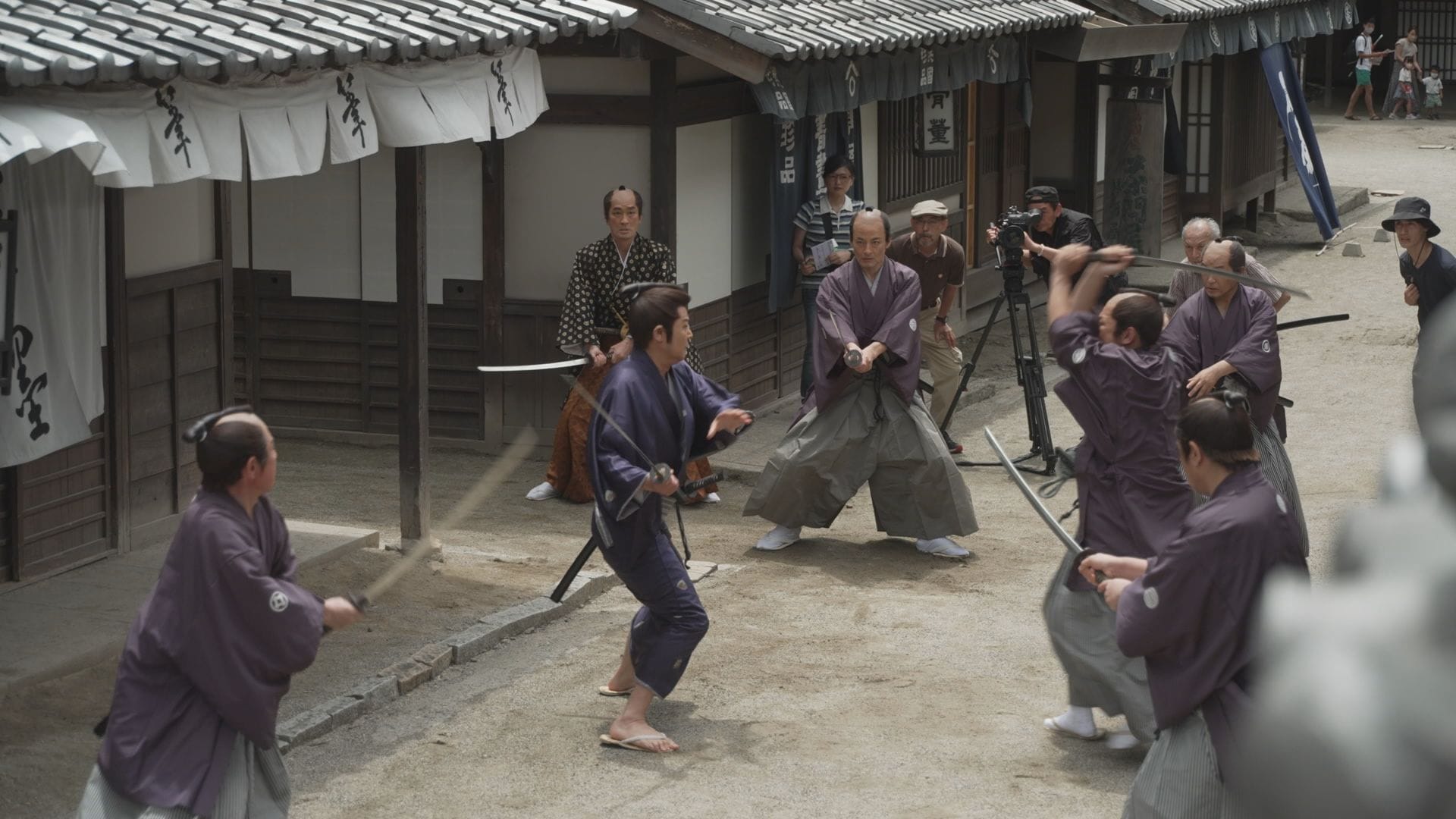
Directed by Yasuda Junichi, A Samurai in Time is a story of a samurai from the Bakumatsu period in Japanese history--a time in the mid-1800s in which Japan was nearing its restoration, ending centuries of civil wars, and eventually unifying the country under a single rule. It's a time period that has been extremely popular to visit in lots of Japanese media, and if you've consumed any amount of anime, Japanese films, or games, there's a pretty high likelihood that you've at some point or another seen some retelling of history or a caricature of some historical figure from this time period. At the beginning of the film, a samurai named Kosaka Shinzaemon lies in wait of his enemy Yamagata Hikokuro, a samurai from an enemy region. As the two fight late at night, a sudden thunderstorm rolls in, and without explanation, a flash of lightning appears to transport Kosaka 140 years into the future, to the year 2007. There's never a further explanation for the time travel, how it works, or why it happened, and there appears to be no method for returning to his time period. We now simply experience the film from the perspective of a man having to grapple with being completely out of his element in an entirely new era.
Fortunately for Kosaka, he lands on the set of a filming location for a jidaigeki--a period drama made for television that just happens to take place during the time period Kosaka just traveled here from. This of course initially causes him much confusion. People are behaving strangely and unnaturally, and his first instinct is to try to defend a woman who is being harassed on the street, who of course is just an actor performing a role. He's further confused when the director of the shoot runs up to him and scolds him for ruining the shot. The assistant director--a woman by the name of Yamamoto Yuko--tries to resolve the situation, assuming Kosaka is an actor who's simply stumbled onto the wrong film set by mistake, instructing him to visit another set elsewhere at the studio. Kosaka gets himself injured in all of his confusion, blacks out, and wakes up at a hospital, now even more confused as he sees his modern surroundings, not just in his hospital room, but looking out onto Kyoto in the year 2007. Yuko, who had brought him to the hospital, is told by doctors that the injuries he sustained on set must be severe enough that it caused amnesia, since Kosaka can't seem to give any rational explanation for who he is or why he was on the set in the first place. To make matters worse, Kosaka leaves the hospital unannounced and begins exploring his new surroundings, later coming to realize that surely what must have happened is that he has time traveled here from 140 years in the past. It's something that he keeps to himself for much of the movie, and seemingly no one from the present day ever figures out exactly where he came from.

Kosaka even returns to the entrance of the shrine where he and his samurai opponent Hikokuro had their fight--a fight that went unfinished when he traveled through time--which is where the old couple who tend to the shrine find him and care for him, offering to let him stay as long as he needs to. During a meal, the chief priest Yoshiharu turns on the TV, which just happens to be playing one of these period drama TV shows. Kosaka is initially spooked by the concept of the television, but quickly realizes that the show was the exact same one where he'd ended up when he mysteriously time traveled here. In fact, he's deeply moved by the storytelling and presentation. The shrine groundskeepers, along with assistant director Yoko, decide that maybe it would be good for Kosaka to get his bearings while he recovers from his "amnesia" by doing small tasks around the shrine, where Yoko sometimes helps coordinate location-based film shoots.
It's during one of these filmings that Kosaka is coincidentally recruited into a scene in which all he needs to do is play a samurai who gets killed by another character. Kosaka is so convincing in his stunt work (largely because he believes he might really die) that he is asked to keep returning to these shoots to continue to play background samurai characters that all need to get killed off unceremoniously. He becomes particularly impassioned about this work, and even wants to learn how to become a better stunt actor--a skill that is in some ways quite different from actually knowing how to fight, since you aren't actually trying to hurt your opponent. Kosaka takes regular lessons from stunt choreographer and fighting instructor Sekimoto, known as a legend in the business for training countless stunt actors on period drama shows. Sekimoto also takes a particular liking to Kosaka because he seems like such a natural to train, and he is in fact so natural that he may truly be a real samurai. It's the closest anyone gets to figuring out Kosaka is in fact a time traveler.
Kosaka successfully finds his place in the world working on TV shows for a year. But things finally get hairy when an old, famous jidaigeki actor named Fuke Norimasa is announced to star in an upcoming film, and he insists that he wants to star against Kosaka, whom he's seen working on TV shows over the past year. And it's at this point in time that Kosaka finally realizes that he may not in fact have been the only person who had time traveled to the year 2007 from the Edo period he himself came from.
From here, I think you should definitely engage with the film yourself if you ever find the chance.
In spending time with this movie, I've realized exactly what it was that my new Japanese acquaintance loved about it. You have to put yourself in the headspace of someone who was raised in Japan, especially several decades ago, who likely saw a deluge of popular period dramas. It was around this same time period in America that we were seeing an onslaught of westerns in TV and movies. Cowboys. Cowboys everywhere you looked. But the time of the western has long since passed, and nobody is making them in droves like they used to. Jidaigeki shows are in a similar boat. The movie even very directly addresses it. Jidaigeki is now a dying art. While you may have once been able to make a living working on period dramas alone, now you'd be lucky if you could make ends meet at all on the pay you'd be making from them since they're so few and far between. There's a very real concern that the art of the jidaigeki could eventually be lost with fewer and fewer people truly knowing how to make them in a traditional manner anymore. The movie seeks to solve that problem by injecting a dude who was actually a real life samurai into the making of these films and TV shows so that the spirit of the samurai show and movie is never completely forgotten, though we certainly can't rely on a time traveling samurai to save an entire medium of entertainment in real life.
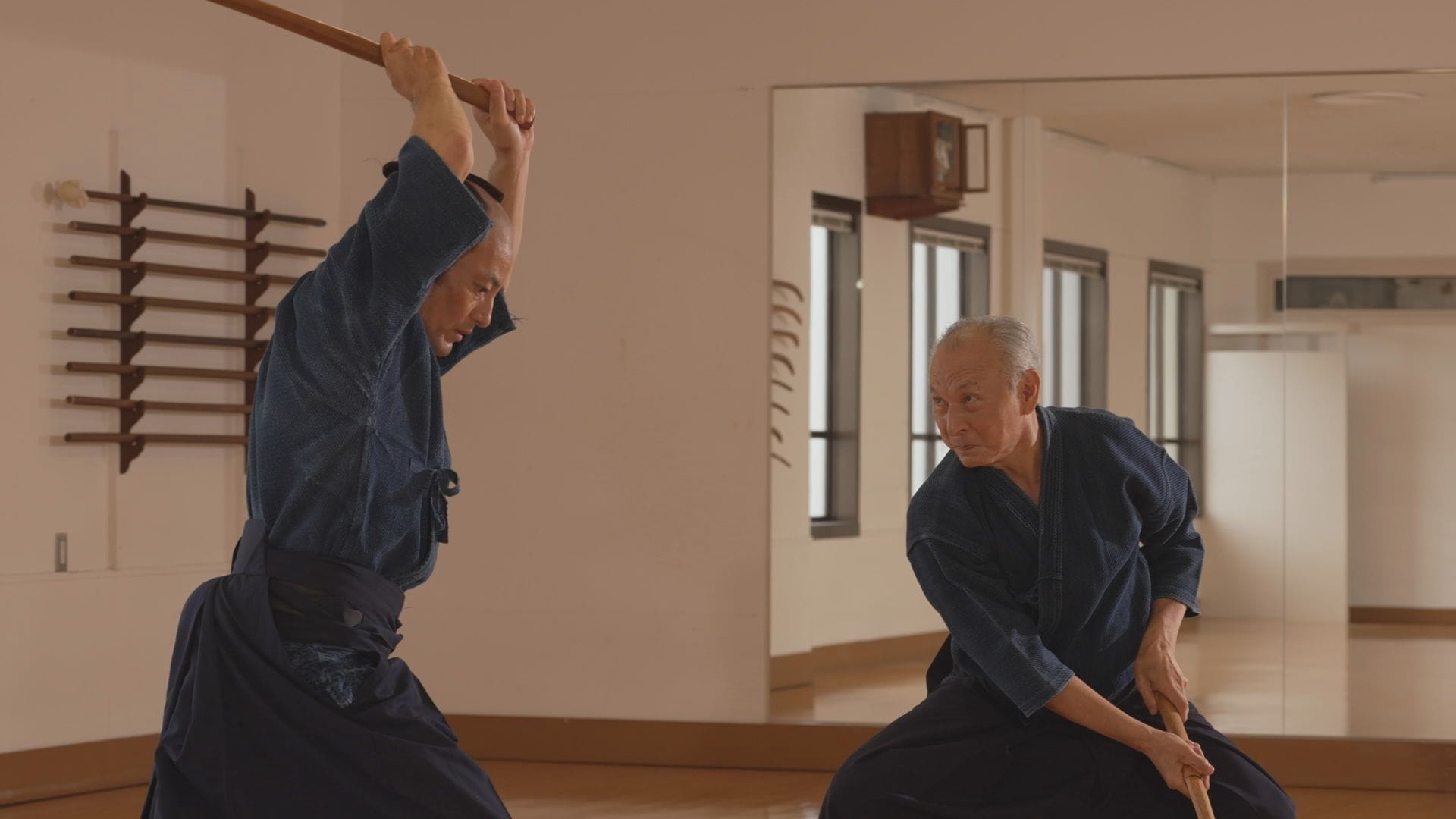
The film spends a pretty in depth amount of time with Kosaka learning stunt work from his master Sekimoto. It's clear there was a very real love and appreciation for the art, the effort, and the craft of making these TV shows a reality. As someone who spends more time paying attention to the stunt work in other Toei-produced shows like Kamen Rider, Super Sentai, and other film and TV franchises, I know that there are people who are very passionate about that kind of stunt work and want to know about all the best, longest-working actors in the industry. It doesn't surprise me to see that there are people who are also extremely interested in the stunt work and fight choreography that goes into jidaigeki projects, too. It's hard not to see the writer and director's love of this genre being poured into this movie. And given that a middle-aged guy who works somewhere in Japanese entertainment couldn't stop singing the film's praises to me over this restaurant get-together, it became clear why it was he thought so highly of it. All of these guys I was hanging out with that night had very specialized interests in various entertainment crafts. And I imagine that jidaigeki shows were something they were all extremely familiar with, given the booming popularity of the medium many decades ago. I don't know if a westerner would totally understand, but maybe there are some comparisons that could be made. As an example, I've always lamented Disney's drifting away from traditional 2D animation in their major Hollywood film releases. Many of their films (along with Pixar's) are of course quite good, vibrant, beautiful, and emotional. But there is probably something we are slowly losing as our traditional pencil-and-paper 2D animators begin to age. I am speaking broadly, of course, as 2D animation largely continues to thrive on television, albeit heavily digitally-assisted. But I do often find myself longing for a time in Disney Animation history that has long since passed. You can only hope that there are still young animators hungry for the style of animation that hasn't much been seen since the mid- to late-2000s. And it seems that there are, of course, working in other places, working on their own projects, working to keep that traditional route alive. Could one compare the art of making a Japanese period drama to that of keeping traditional animation alive for large-scale theatrical features? I don't know, I'm just somebody on the internet that paid for a domain address where I could write down random things I'm thinking about and am not really an authority figure on any of these subjects. But if I had to make that comparison to people who weren't raised on Japanese television decades earlier, maybe that would be it.
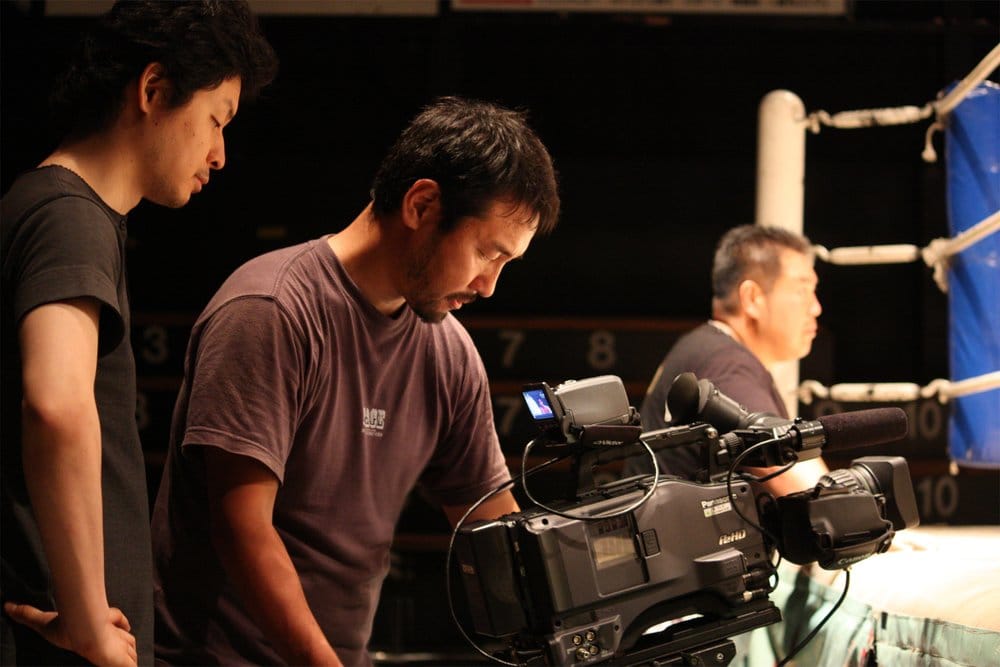
But I think what really sold me on this movie was watching the bonus features on the Blu-ray release. For what it's worth, Third Window Films has a very decent Blu-ray release with good bonus features, including a behind the scenes commentary with the actors playing Kosaka and Yuko, as well as an interview with writer and director Yasuda Junichi. The interview with the director was especially enlightening to me, as he explains that he's kinda just some guy. No, really. He has a day job, and also owns and operates a rice field that he inherited from his dad in Kyoto. As A Samurai in Time is now his third feature-length film, it seems clear that he pulls inspiration from things he has seen and experienced in his real life. His previous release, Gohan (rice), features a plot about working on a rice field, which seems very much pulled from real life experience. The Blu-ray interview also further explains that much of his films have been made entirely on a budget pulled from his own wallet--an experience that I can personally empathize with (although the movie I made with my husband and my friends over ten years ago is just some silly internet movie with absolutely no film education at all whatsoever, so Yasuda is way ahead of me on this one, no comparison).
In the case of A Samurai in Time, Yasuda spent time writing the film in his downtime away from work, and had been able to finally acquire some financial backers to help him make this movie. Unfortunately, it wasn't long after that that COVID-19 hit, and suddenly some of those backers were finding themselves in dire circumstances as well. But Yasuda had the good fortune of finding himself with a lot of people willing to help him out and provide him some favors. He was lucky to be able to work things out with Toei to be able to use their Kyoto studio (a studio that is also a popular Edo period-themed park) at a discount because they filmed during the summer, when it was too hot for most other productions to want to use it. Props and wigs were also rented to him at a discount. As someone who has participated in the creation of a number of crappy internet movies over the years, I could highly identify with really flying by the seat of your pants and calling in as many favors as you can manage to make your creative vision come to life. Of course, nothing about A Samurai in Time is crappy at all. All of Yasuda's hard work and effort, and his clear love of jidaigeki and action stunt actors, culminated into a loving story of all kinds of various people trying desperately to keep something alive, be that a specific art form, a dream of becoming a director, or just trying to do right by the memory of people who are now long gone. You can maybe even see some further inspiration for the creation of this film in the character of Yuko, whose backstory is that of an assistant director who desperately wants to move up into a lead director position one day, and has been working on writing a script of her own in her off time, no matter how busy she gets with other work. It's something that sounds very similar to the way Yasuda described working on the script for this very movie. And hearing Yasuda's description of the way everything came together, paired together with watching the completed movie that resulted from all of his passionate efforts, it's something that is very motivating and makes you want to shoot for your own dreams, too, even when you're feeling beaten down by other daily responsibilities that threaten to drain you of your time and energy.
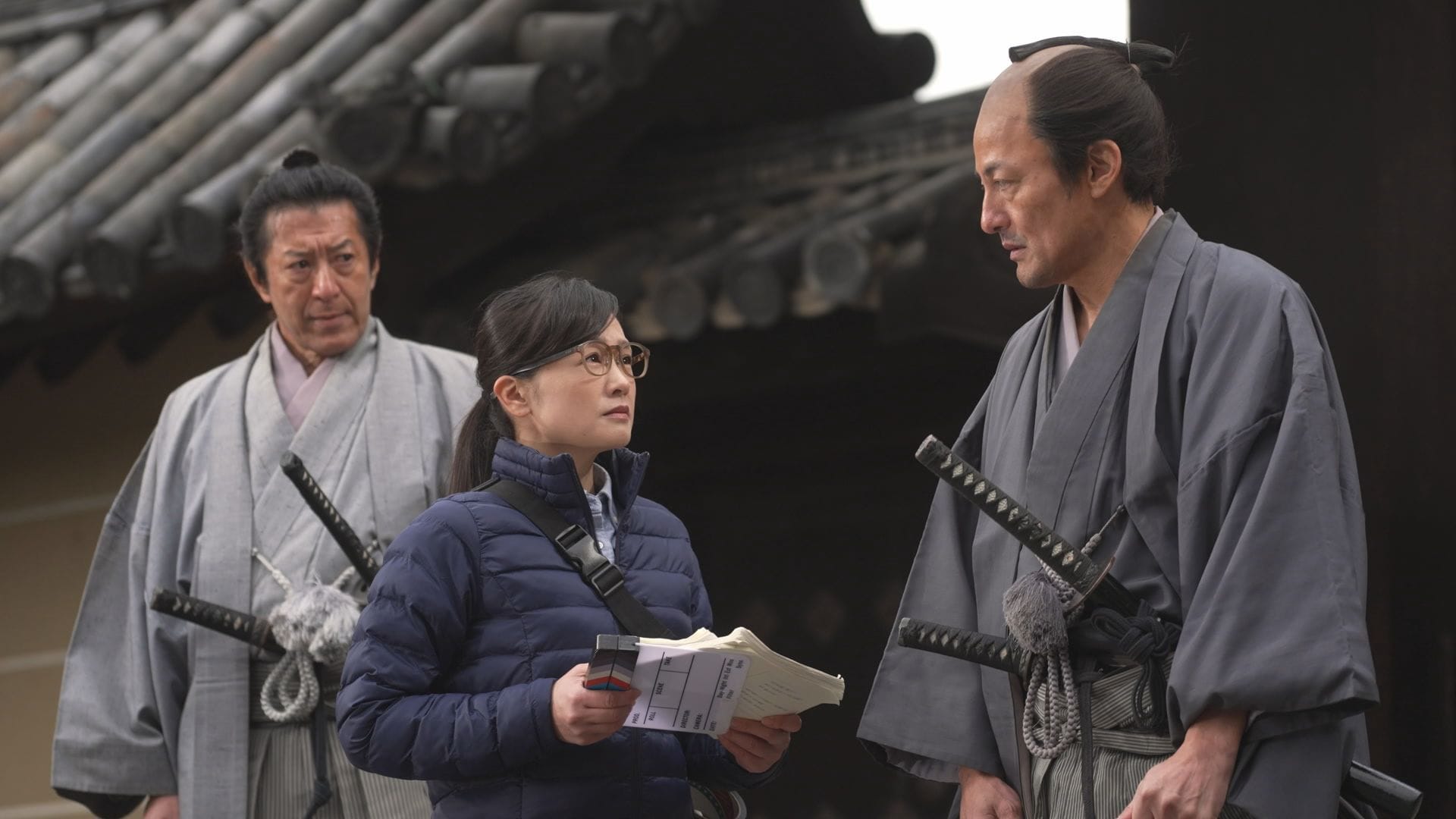
A Samurai in Time also serves as a memorial project for real life jidaigeki actor Fukumoto Seizo, who had originally been cast in the role of Sekimoto but died during production, nearly halting director Yasuda's desire to complete the film entirely. Americans would most readily recognize him in the role of the Silent Samurai in the Tom Cruise movie The Last Samurai, but Fukumoto died on screen as a jidaigeki actor literally tens of thousands of times over the course of decades in Japan and was well loved by those with a passion for period dramas and their stunt work. Film production did eventually continue and the character of Sekimoto was recast, but I do wonder what a film with an actor having such a rich background in the genre as he had would have been like.
At the end of the day, I strongly recommend A Samurai in Time to anyone who has ever enjoyed a samurai film or TV show, to anyone who loves the art of stunt work, or to anyone who has ever had a dream they wanted to fulfill against great odds. Watching the movie has strongly made me desire to seek out Yasuda's two prior movies, one of which is a 2014 tokusatsu (special effects) movie entitled Kenju to Medamayaki (Guns and Sunny-Side Up), although at the moment I find it to be particularly difficult to find this film in any capacity, especially through any English-speaking channels. I'll have to begin my hunt in earnest and report back on it when I find it. As someone who also made a weird little tokusatsu movie using little more than pocket change in the year 2014, I'm very curious to see what Yasuda's work on that film looks like.
I hope one day I get to talk to that guy I met last year again and tell him his glowing recommendation served to generate a new fan of the movie, and of the director. It's made me even want to seek out more jidaigeki TV series since I've spent very little time watching any of them myself.

Thank you to all of my Patreon subscribers for making writing about my thoughts and experiences possible. Blogs like this are able to happen more often with your kind support. If you are interested in becoming a member and seeing the perks available, please consider subscribing to my Patreon.
Special thanks to the following Phobos and Mars tier members: Scott Sandler, BetaRayILL, Mannekwin, and MB.
Extra special thanks to Kasei Gumi member Gomer.

